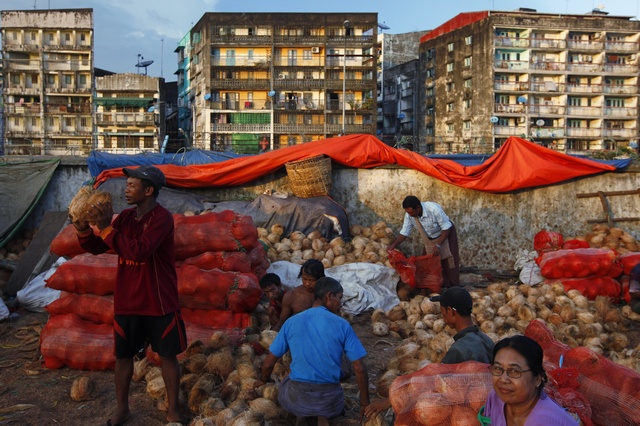In a report on East Asian countries’ economies released on Monday, the World Bank estimated Burma’s economic growth rate at 8.5 percent for 2014 and 2015, a figure higher than any other nation it surveyed, including China.
Currently Burma has a growth rate of 6.3 percent, although this year several international market watchers accredited Burma with the potential to achieve greater expansion. In January, the International Monetary Fund (IMF) announced that Burma is set to grow at 7.5 percent for the fiscal year 2014, provided inflation was monitored.
This was followed by the Asian Development Bank highlighting in September a much higher potential, and predicting a growth rate of 9.5 percent by 2030.
However, most of these predictions are followed with conditional clauses: provided Burma keeps inflation in control; it invests in upgrading infrastructure; develops human capital; and controls the political instability in the country.
The inflation rate, which IMF and ADB also predict could accelerate at the rate of 6.6 percent in 2014-15, remains the biggest hindrance for the Burmese economy to achieve high growth rates. With a predominant part of the Burmese population being poor, and the rising cost of living due to price rise of commodities and real estate in the country, questions surround whether economic growth will improve quality of life.
[related]
Burma, until recently something of a pariah state, opened its economy after President Thein Sein assumed office in 2011.It has since achieves the status of the “fastest growing Southeast Asian economy”. Burma, officially known as Myanmar, is now being re-branded on the international platform as the “last frontier” in ASEAN, in a bid to accelerate foreign investment in the country.
Increase in the export of commodities, a tourism boom, increased energy sector investments, credit growth, and more and more multinationals investing in Burma are steadily increasing growth rate in the country. Burma also boasts a massive potential in natural resources, with natural gas exports contributing to US$ 3.6 billion per annum, which is almost 40 percent of all exports.
Several critics and economists are however sceptical about Burma’s ability to achieve such a high growth rate within a short period of time.
Sean Turnell, Burma economics expert at Australia’s Macquarie University told DVB that, “There will be growth, driven by increasing tourism, the revival of the clothing and textile export sector, increasing gas shipments to China, and increasing activity in construction (especially in Rangoon), but it’s hard to see how this adds up to the highest growth rates in the world.”
“I find the World Bank’s estimate to be on the unrealistic side of optimism,” said Turnel. He further points towards the ambiguity that surrounds the achievement of this ambitious 8.5 percent growth rate.
“With 75 percent of the population engaged in agriculture (an industry in which there have been few, if any, gains in recent times), falling commodity prices, a slowing global economy, domestic uncertainties surrounding politics in 2015, waning enthusiasm for reform within the government, and an increasing understanding amongst foreign investors of the difficulties – I just don’t see where such high growth is meant to come from,” said Turnel.
The World Bank this year recommenced lending to the Burmese government, and in January it pledged US$2 billion in development aid to the country for projects such as healthcare and energy supply. The World Bank last week also pledged to cooperate with the Department of Water Resources with a loan of $100 million to develop the Irrawaddy River basin.
However, rights groups say that the World Bank’s investments come at a time when many human rights issues remain unresolved in in Burma.
In a counter-statement to the World Bank report on Monday, Human Rights Watch urged the institution to factor human rights concerns into its strategies and proposals.
If Burma does manage to achieve the predicted growth rate for 2014-15, it would dwarf the economic growth of the leading market player in the region; China, which has a projected growth rate of 7.4 percent.



